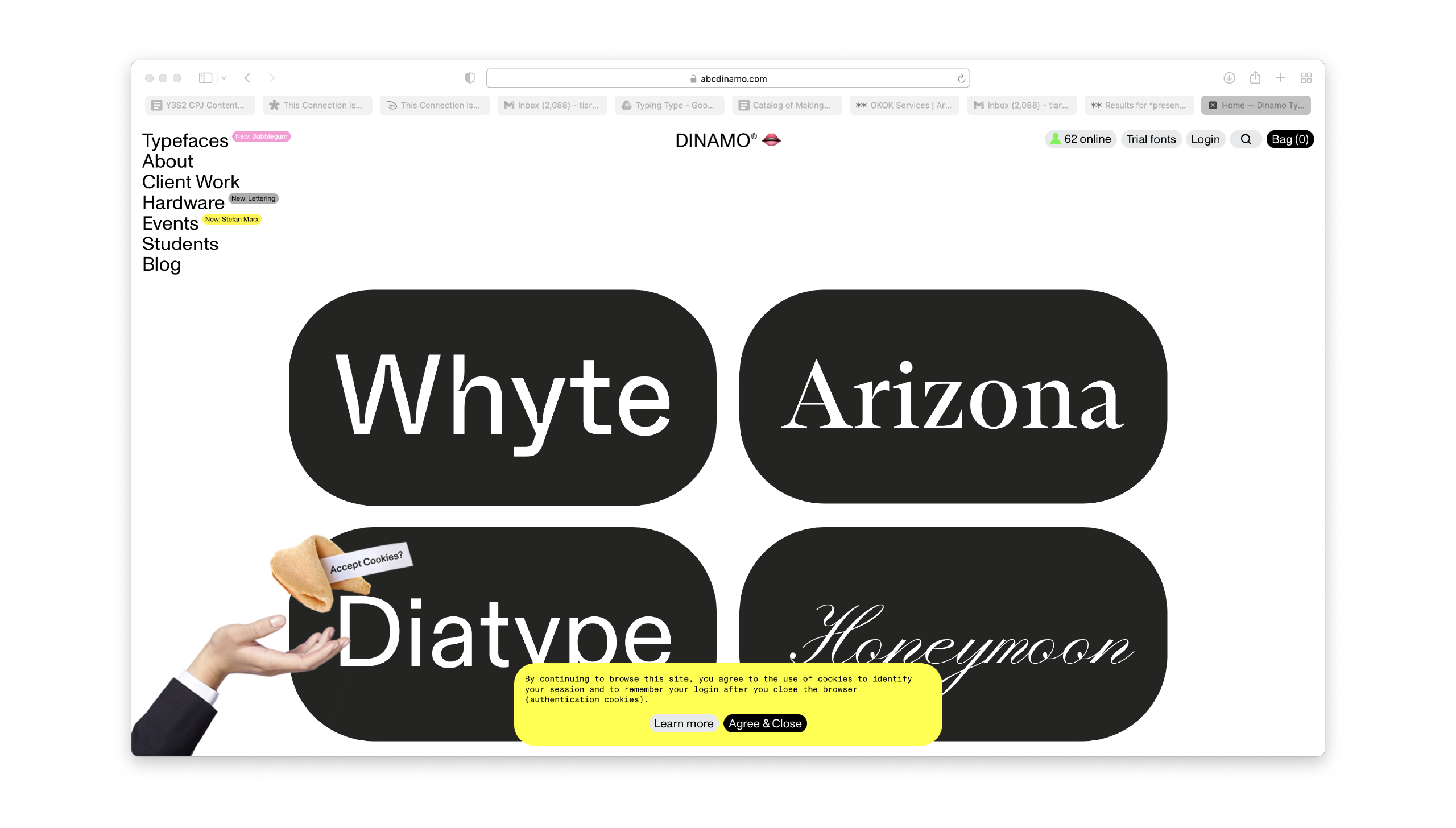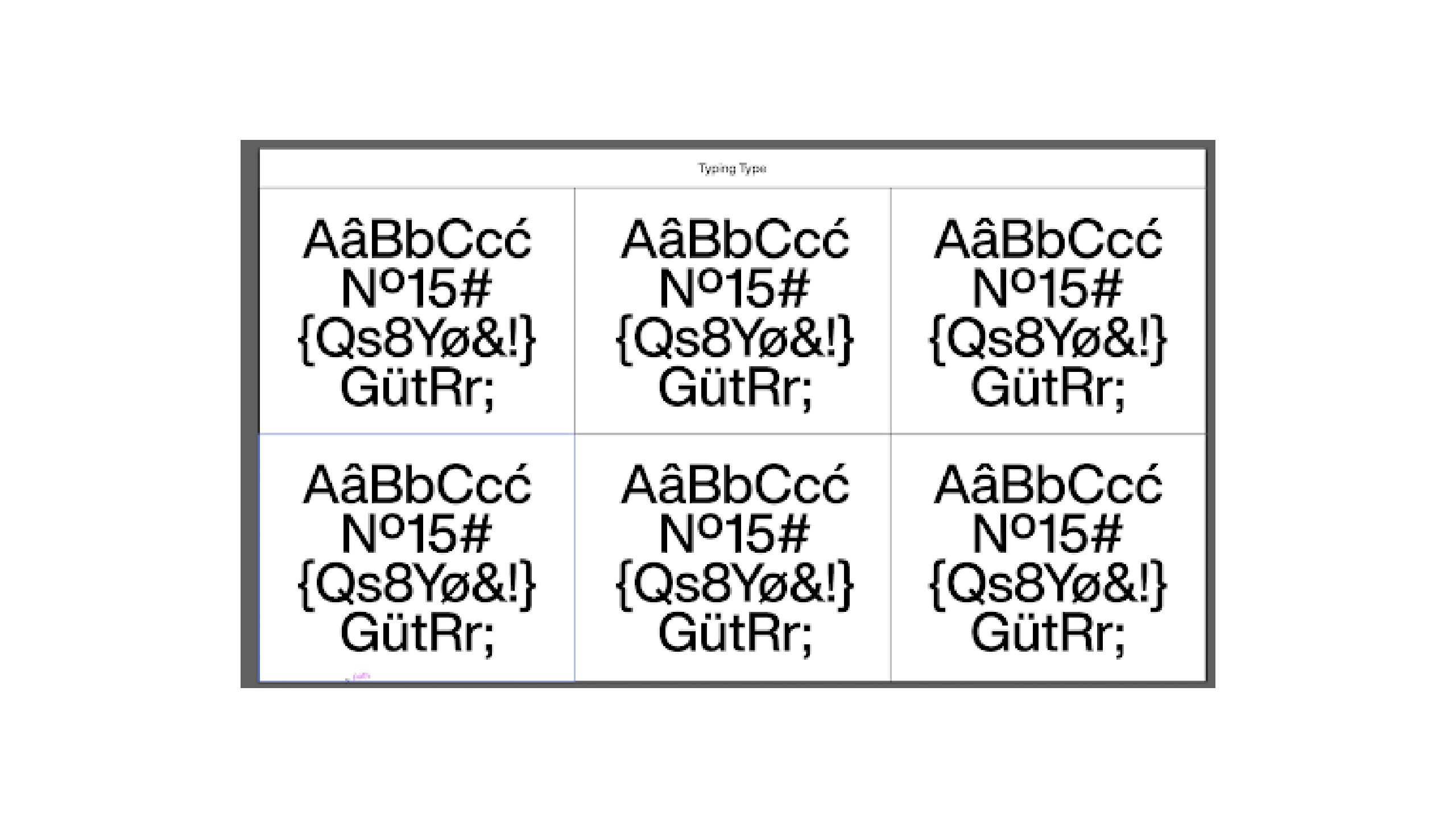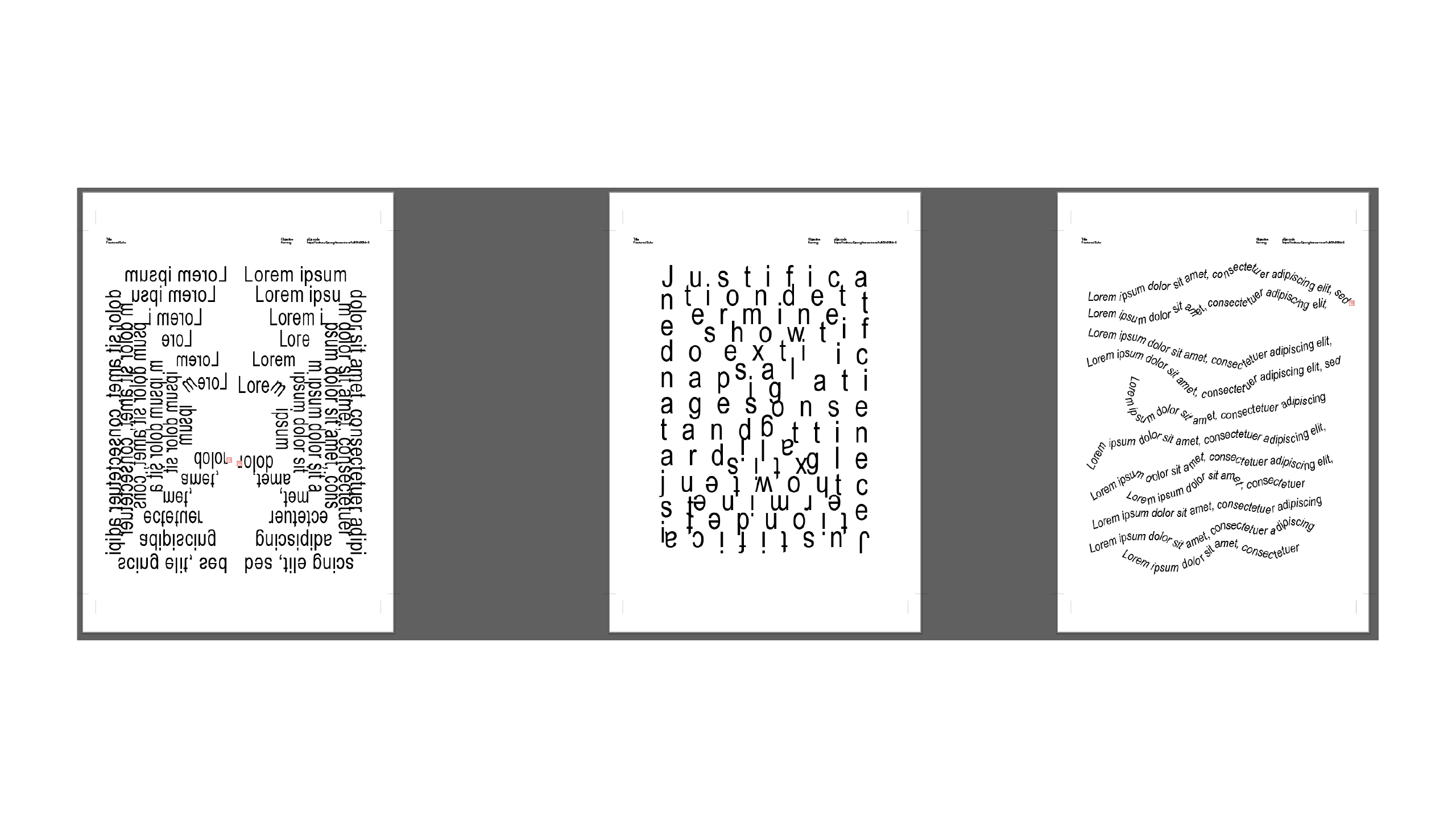This week, I focused on researching how my user testing website should function. I knew from the start that I wanted users to be able to type and experience what it feels like to engage with a disrupted text flow or unusual typesetting as they type. To get a better sense of how interactions like these could work, I started looking at various type-related websites, like ABCDinamo and other type specimen sites I found on Arena. One thing that stood out to me was how smooth the transitions were when adjusting type settings, especially in cases where users could manipulate font size using sliders. The seamless animation made everything feel more cohesive, and it’s these small but intentional details that I want to bring into my user testing experience.

Link here.
Another feature I liked was the ability for users to input their own text rather than being stuck with a default placeholder. Having a pre-set sentence is fine, but the option to modify it makes the experience more personal and useful for users who want to see how their own words look in a given type setting. These little interactive elements might seem minor, but they contribute to the overall usability and aesthetic of the site, which is something I took note of. I definitely want to include these functions in my own website.

Link here.

As for the structure of my site, I started sketching how it might look. The plan is to have multiple containers, each holding a different typographic exploration. Each container would contain a placeholder text and a specific typographic behavior, whether it’s playing with kerning, leading, justification, text flow, text wrap, or interactive text. Essentially, I’m bringing together all six of my previous explorations from Semester 1 and 2. However, after mapping it out, I felt that six explorations weren’t enough. I wanted to expand it to nine, to allow for a broader scope of experimentation. Having more variations gives users a better understanding of how different fundamental typographic properties can influence the act of typing in real time.

For my publication explorations this week, I worked on three different concepts. The first one was a study on justification. Instead of traditional left, right, or center alignment, I experimented with centering the text dynamically around the canvas rather than within a confined block. This alternative form of justification creates a more scattered but still intentional text arrangement, making it feel less rigid. The second sketch involved creating four triangular sections with text filling the inside space. This experiment was more about using shape as a constraint to see how text could be arranged organically within a geometric boundary. It played with both readability and form, which I found interesting.
The third experiment focused on leading but in a way that was uneven and static. Instead of having a consistent leading value throughout, I varied the spacing erratically, which resulted in an unusual rhythm in how the text was structured. The shifts in spacing created an unexpected flow, almost like text moving in waves instead of traditional lines. What I liked most about this experiment was how it disrupted the reading experience without making it entirely unreadable. It still maintained a structure, but it wasn’t predictable, which aligns with my goal of making typing more exploratory rather than purely functional.
Reflecting on this week, I realize I’ve been in more of a research mode rather than producing a lot of work. But I think that’s fine because I needed this phase to refine my ideas before executing them properly. Honestly, I felt a bit slow in my progress, mainly because I just submitted my dissertation and felt pretty drained afterwards. I did what I could, but I know I’ll need to push myself more next week to make up for it. At the same time, I don’t want to force the process just for the sake of producing work—I want to make sure whatever I put out makes sense for the project.
Next week, I plan to start coding the interactive elements of my user testing website. Now that I have a clearer idea of how I want users to experience disruptive text flow and unconventional type settings, it's time to implement those ideas. I’ll be focusing on getting the text to behave dynamically as users type—whether it’s shifting kerning, adjusting leading in real-time, or playing with justification in ways that break traditional constraints.
At the same time, I’ll continue refining my publication, making sure the design effectively presents my experiments. While the research phase helped me gather inspiration and set a direction, now it’s about execution—bringing everything to life in a way that feels intentional and cohesive. There's still a lot to figure out, but coding the website will be a big step in making this project fully functional and interactive.
